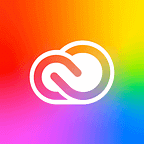Moving Beyond the Screen: Designing the UX for Internet of Things (IOT) Devices
For creatives and designers working with Internet of Things (IOT) devices, designing a UX that engages users is one of the biggest challenges. Gartner estimates that there will be 6.4 billion connected devices by the end of 2016. Yet IOT products succeed only when they solve real problems and make users’ lives easier. Design is the critical component that bridges IOT technology’s potential with meeting real human needs.
Focus on People: Designing Around UX Limitations
“With IOT, the ability for things to talk to other things has been growing exponentially. But the Achilles heel and greatest opportunity lies in those things ultimately talking to people. What made Nest such a revolutionary product wasn’t that it was the first smart thermostat. It had everything to do with the user experience. Nest’s UX limitations also suggest there is a long ways to go. This is true everywhere from car technology to weather systems to wearables,” says Sven Newman.
Brothers Brett and Sven Newman founded San Francisco-based design and social innovation firm Daylight Design, which creates digital experiences and tangible products. Their approach is distinct: human-focused design for social impact. Both brothers attended Stanford’s Design School and held high level design positions before striking out on their own.
Designing IOT UXs for Behavior Change
IOT design requires a sharp focus on user needs that conveys the benefit quickly. “One question we always ask ourselves about a product is: How much work is it to get to ‘Wow!’ You have to engage them and prove the value in the first three clicks or actions,” says Brett.
Great design is essential for IOT devices to have a full impact. “Ultimately, IOT is only as useful as the human interface and how effectively it drives behavior change.”
Sven explains that it can be easy to focus on the wrong things during design. “The greatest competitor IOT companies face is whatever consumers are currently doing without IOT. Behavior change is hard. People have a very low tolerance for the inconvenience of learning something new or doing something differently. That’s why user experience is so vital for IOT products. If consumers experience something delightful and intuitive, it’s possible they will consider adding a new routine or product to their life. But if it’s remotely difficult or complicated, forget it.”
Pioneering a New Space: IOT Design is Unfolding
Designers at Daylight apply their skills to a wide range of projects. “One team in our studio is thinking about the user experience of a smart product in the world of hiking and camping. Another is designing the UX for a home entertainment system. A third is thinking deeply about user needs in fintech, and a fourth is using tech and design thinking to help address the daunting challenge of human trafficking,” says Sven.
IOT designers spend their time brainstorming, creating prototypes, and conducting product research in multiple forms. They work with paper and pen, use digital tools like Adobe’s Creative Cloud, and test physical prototypes. Working in the right environment helps stimulate creativity. “Our studio is completely plastered with sketches, diagrams, and user research pictures pinned to foam core. When you have curious, creative designers, that visual stimulation is guaranteed to invite and spark conversation across projects and ultimately lead to better user experience design.”
Launching a Career in IOT Design
Developing the skills to learn in context and experiment with prototypes is an essential part of mastering user-focused IOT design. “When you are doing digital user experience, it can be easy and efficient to design based on focus group feedback and online survey responses. But you learn so much more when you see how your product or idea might really fit into real people’s lives. What else is going on in their life when they are trying to interact with your product? What might they be feeling? How does it fit into the mental models they are using as they go about the day?” explains Brett.
Daylight’s key advice for pursuing a design career in the IOT space is simple, but not easy. Sven advises, “Stay laser focused on human needs. There is no question that what’s emerging in the IOT space will have a profound positive impact on the world. But that impact is completely reliant on people who make sure companies are unwaveringly attending to unmet needs and designing elegant, effective user experiences.”
This post was originally published on the Creative Cloud Blog.
More about Adobe XD:
- Download Adobe Experience Design CC (Preview) — Mac 10.10+ only
- Adobe XD Twitter account — also use #adobexd to talk to the team!
- Adobe XD UserVoice ideas database
- Adobe XD forum
